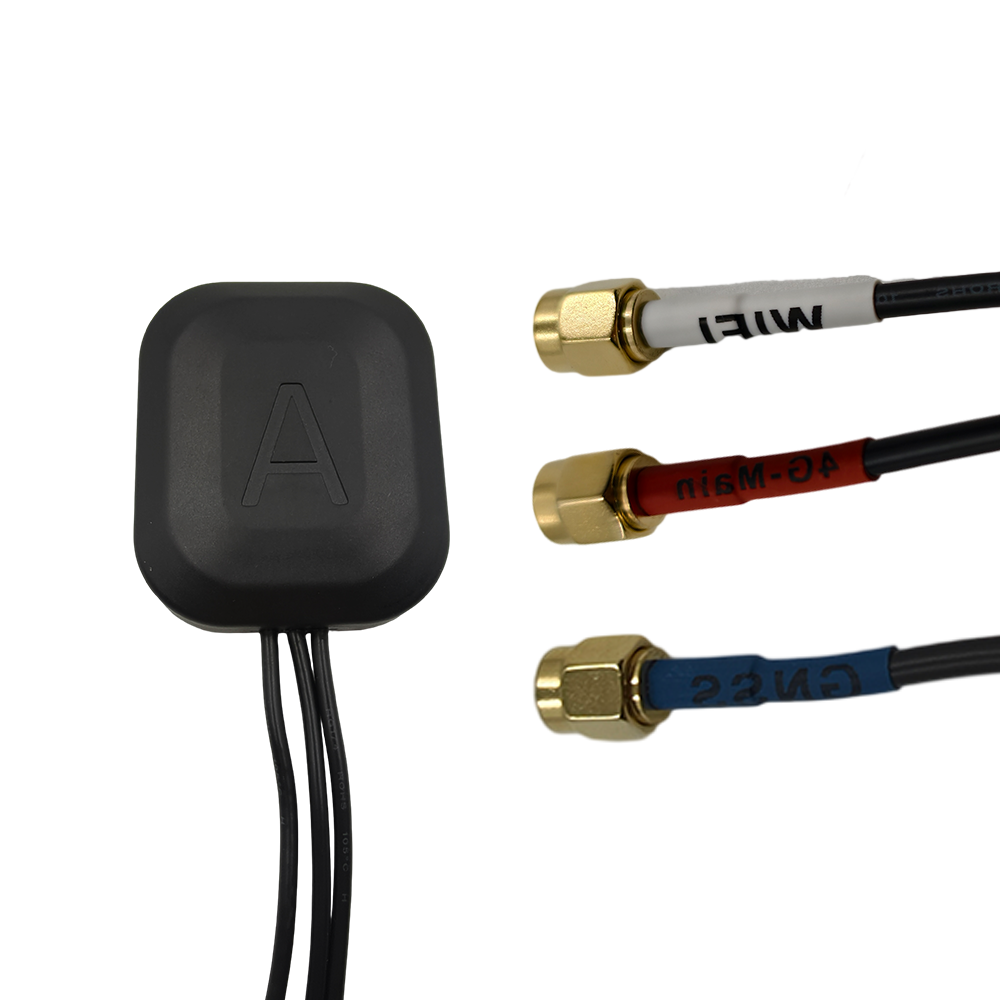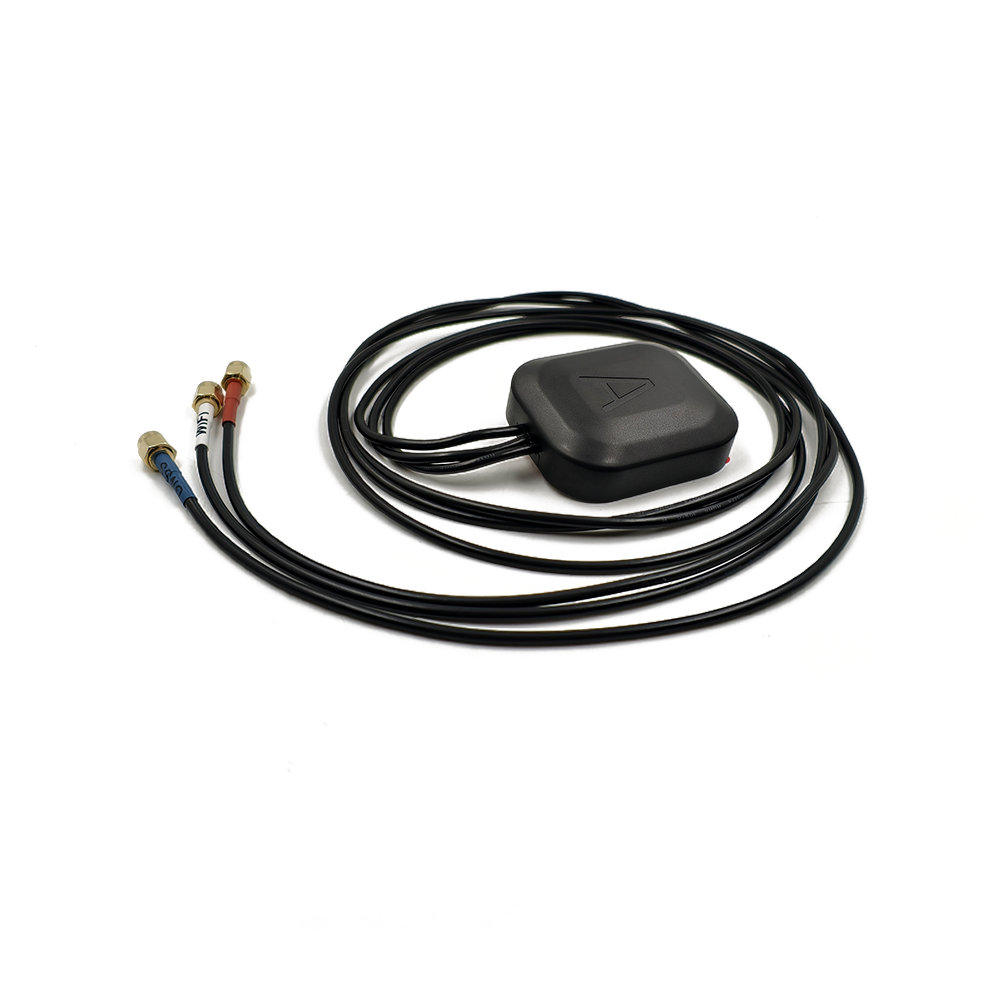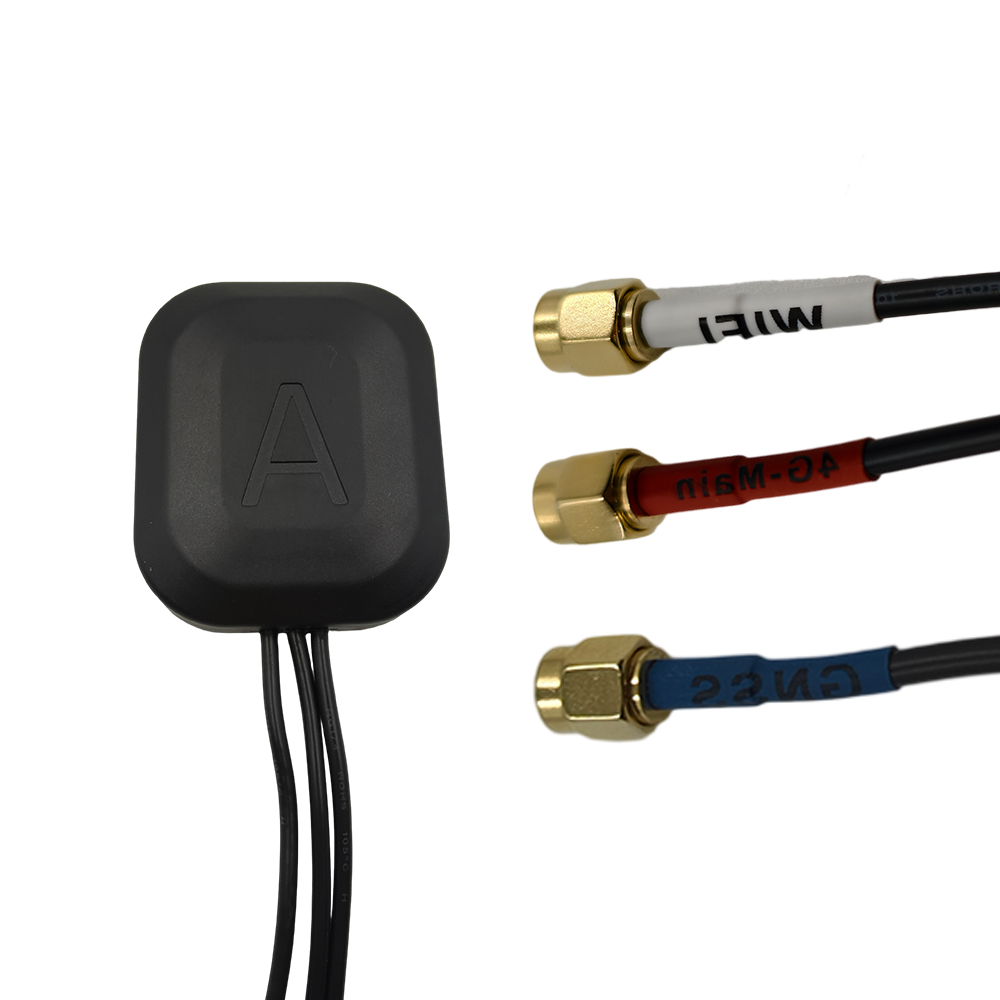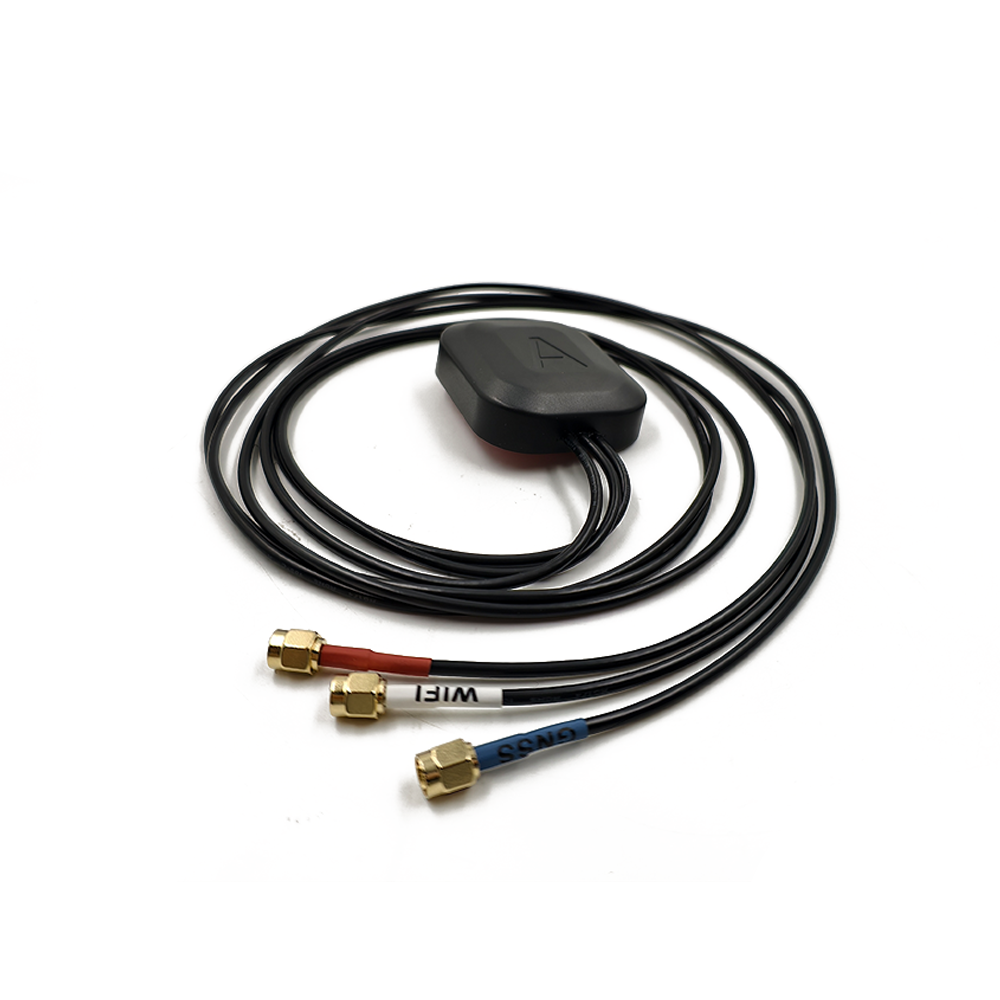Compact high - gain RTK antennas are already being used in a wide range of applications, and future trends suggest even more widespread adoption and further technological advancements.
5.1 Current Applications
5.1.1 Precision Agriculture
In precision agriculture, compact high - gain RTK antennas are used in a variety of ways. Agricultural drones equipped with these antennas are used for crop monitoring. The high - accuracy positioning provided by the antennas allows for precise mapping of crop health, pest infestations, and nutrient deficiencies. Automated tractors and other farming machinery also use RTK - enabled antennas for guidance. This enables farmers to perform tasks such as plowing, seeding, and spraying with centimeter - level accuracy, reducing the use of fertilizers and pesticides and increasing crop yields.
For example, a farmer can use an RTK - guided tractor to plant seeds at the exact spacing required for optimal crop growth. The compact antenna on the tractor ensures that the positioning information is accurate, even in large fields with varying terrain.
5.1.2 Construction and Surveying
In the construction industry, compact high - gain RTK antennas are used for tasks such as site surveying, grading, and building layout. Surveyors use handheld or backpack - mounted RTK devices with compact antennas to quickly and accurately measure land boundaries, elevation levels, and other topographic features. In construction equipment, such as excavators and bulldozers, RTK antennas enable precise control of the machine's movements, ensuring that the construction work is carried out according to the design specifications.
For instance, in a large - scale building project, the use of RTK - equipped construction machinery can reduce the time and effort required for grading and leveling
the construction site. This not only speeds up the construction process but also ensures that the site is prepared accurately for subsequent construction phases, such as foundation laying.
5.1.3 Autonomous Vehicles and Transportation
The autonomous vehicle (AV) industry is one of the fastest - growing adopters of compact high - gain RTK antennas. Autonomous cars, trucks, and shuttles require continuous and precise positioning to navigate safely in various environments, including urban streets, highways, and rural roads. Compact high - gain RTK antennas provide the centimeter - level accuracy needed for AVs to detect their position relative to other vehicles, pedestrians, traffic signals, and road boundaries.
In addition to AVs, the transportation sector also uses these antennas in intelligent transportation systems (ITS). For example, in truck platooning, where multiple trucks travel in a close - knit formation to reduce fuel consumption and improve traffic flow, RTK antennas ensure that each truck maintains a precise distance from the vehicle in front. The compact size of the antennas allows for easy integration into the truck's design without affecting its aerodynamics or overall structure.
5.1.4 Geospatial Mapping and Remote Sensing
Geospatial mapping and remote sensing applications rely on accurate positioning data to create detailed maps and models of the Earth's surface. Compact high - gain RTK antennas are used in mapping drones, airborne LiDAR (Light Detection and Ranging) systems, and terrestrial mapping equipment. These antennas enable the collection of high - precision positioning data, which is essential for creating topographic maps, monitoring land use changes, and conducting environmental surveys.
For example, in a coastal mapping project, a drone equipped with a compact high - gain RTK antenna can capture detailed images and positioning data of the coastline. This data can be used to monitor coastal erosion, plan coastal protection measures, and update nautical charts. The high accuracy of the RTK antenna ensures that the mapping data is reliable and can be used for critical decision - making.
5.2 Future Trends
5.2.1 Miniaturization and Integration
One of the key future trends in compact high - gain RTK antenna technology is further miniaturization. As devices in various industries become smaller and more portable, there is a growing demand for even smaller RTK antennas. Advances in nanotechnology and microfabrication techniques are expected to enable the development of antennas with dimensions measured in millimeters, while still maintaining high gain and performance.
Integration is another important trend. Future compact high - gain RTK antennas are likely to be integrated with other components, such as GNSS receivers, sensors, and wireless communication modules, into a single compact package. This integration will simplify the design and manufacturing of RTK - enabled devices, reduce their overall size and weight, and lower production costs. For example, a single chip - based RTK system that combines the antenna, receiver, and processing electronics could be developed, making it easier to integrate RTK functionality into consumer devices like smartphones and wearables.
5.2.2 Enhanced Anti - Interference Capabilities
With the increasing number of wireless devices and communication systems, the problem of interference is expected to become more severe. Future compact high - gain RTK antennas will need to have enhanced anti - interference capabilities to ensure reliable signal reception. Research is ongoing in the development of new antenna designs and signal processing algorithms that can better mitigate the effects of EMI and RFI.
One promising approach is the use of adaptive antenna arrays. These arrays consist of multiple antenna elements that can dynamically adjust their radiation patterns to focus on the desired GNSS signals and reject interfering signals. Adaptive arrays can also be used to track multiple satellites simultaneously, improving the reliability and accuracy of RTK positioning. In addition, the integration of artificial intelligence (AI) and machine learning (ML) algorithms into the antenna's signal processing system could enable real - time detection and mitigation of interference. AI/ML algorithms can learn to recognize different types of interference patterns and adjust the antenna's parameters accordingly to minimize their impact.
5.2.3 Compatibility with Emerging GNSS Systems
As new GNSS systems are developed and existing ones are upgraded, future compact high - gain RTK antennas will need to be compatible with these emerging systems. For example, the European Space Agency's Galileo system is continuously expanding, and new satellites with advanced capabilities are being launched. The Chinese BeiDou system is also undergoing upgrades to improve its accuracy and coverage.
Future RTK antennas will be designed to operate across a wider range of frequencies to support these new GNSS systems. They will also need to be able to handle the increased data rates and more complex signal structures of these systems. In addition, the use of multi - frequency antennas will become more common. Multi - frequency antennas can receive signals from multiple GNSS frequency bands simultaneously, which helps in reducing the effects of ionospheric delay (a major source of positioning error) and improving the accuracy and reliability of RTK positioning.
5.2.4 Energy Efficiency
Energy efficiency is becoming an important consideration in the design of electronic devices, especially those that are battery - powered, such as UAVs, handheld surveying equipment, and wearable devices. Future compact high - gain RTK antennas will be designed to consume less power while maintaining high performance.
Advances in low - power electronics and antenna design techniques will contribute to improved energy efficiency. For example, the use of low - power amplifiers and signal processing circuits in the antenna system can reduce the overall power consumption. In addition, the development of energy - harvesting technologies could enable RTK antennas to harvest energy from the environment, such as solar energy or radio frequency energy, to power themselves. This would extend the battery life of battery - powered devices and reduce the need for frequent recharging or battery replacement.
Conclusion
Compact high - gain RTK antennas have emerged as a critical technology in the field of satellite - based positioning, enabling centimeter - level accuracy in a wide range of applications. This comprehensive analysis has explored various aspects of these antennas, including their overview, design and construction, working principles, advantages and challenges, applications, and future trends.
6.1 Summary of Key Findings
In the overview section, we defined compact high - gain RTK antennas as devices that efficiently receive GNSS signals in a small form factor, with high gain being crucial for capturing weak signals and improving SNR. The historical development of these antennas has been driven by the evolution of GNSS technology and the growing demand for accurate positioning in various industries. The market for compact high - gain RTK antennas is experiencing significant growth, with key application areas including precision agriculture, construction and surveying, autonomous vehicles, and geospatial mapping.
The design and construction of compact high - gain RTK antennas involve the use of various antenna design principles, such as helical and patch antenna designs, and careful selection of conductive and dielectric materials. Manufacturing techniques like PCB fabrication and precision assembly ensure the production of high - quality antennas with consistent performance.
The working principles of these antennas revolve around the reception of GNSS signals, which are characterized by specific frequencies and polarization, and the processing of these signals using carrier - phase measurements and differential GNSS techniques. The high gain of the antennas improves the accuracy of carrier - phase measurements, enabling centimeter - level positioning.
Compact high - gain RTK antennas offer several advantages, including high accuracy, compact size and portability, and compatibility with multiple GNSS constellations. However, they also face challenges such as interference susceptibility, multipath interference, and cost - performance trade - offs.
In terms of applications, these antennas are widely used in precision agriculture for tasks like crop monitoring and automated tractor guidance, in construction and surveying for site surveying and grading, in autonomous vehicles for safe navigation, and in geospatial mapping for creating detailed maps. Future trends in the field include further miniaturization and integration, enhanced anti - interference capabilities, compatibility with emerging GNSS systems, and improved energy efficiency.
6.2 Significance and Impact
The significance of compact high - gain RTK antennas cannot be overstated. They have revolutionized the way we perform positioning - dependent tasks in various industries. In precision agriculture, they have enabled the adoption of precision farming techniques, which help in reducing the use of resources like fertilizers and pesticides, increasing crop yields, and promoting sustainable agriculture. In the construction industry, they have improved the efficiency and accuracy of construction projects, reducing material waste and construction time.
In the autonomous vehicle industry, compact high - gain RTK antennas are essential for the safe deployment of AVs. The centimeter - level accuracy they provide ensures that AVs can navigate safely in complex environments, reducing the risk of accidents. In geospatial mapping and remote sensing, these antennas enable the collection of high - precision data, which is crucial for environmental monitoring, urban planning, and disaster management.
6.3 Future Outlook
Looking ahead, the future of compact high - gain RTK antennas is promising. The ongoing advancements in technology, such as miniaturization, integration, enhanced anti - interference capabilities, and compatibility with emerging GNSS systems, will further expand their applications and improve their performance.
As the demand for accurate and reliable positioning continues to grow in various industries, the market for compact high - gain RTK antennas is expected to expand further. The development of new applications, such as in the Internet of Things (IoT) and smart cities, will also drive the growth of this market. For example, in smart cities, RTK - enabled devices can be used for traffic management, asset tracking, and public safety applications.
However, there are also challenges that need to be addressed to fully realize the potential of compact high - gain RTK antennas. The cost of these antennas remains a barrier to their adoption in some cost - sensitive applications. Further research and development are needed to reduce the cost of manufacturing while maintaining high performance. In addition, the issue of interference needs to be continuously addressed as the number of wireless devices and communication systems increases.
In conclusion, compact high - gain RTK antennas have become an indispensable technology in the modern world, enabling accurate and reliable positioning in a wide range of applications. With ongoing technological advancements and the growing demand for precision positioning, these antennas are poised to play an even more important role in shaping the future of various industries. Continued research and development in this field will be key to overcoming the existing challenges and unlocking new opportunities for the application of compact high - gain RTK antennas.




































































 Language
Language
 En
En Cn
Cn Korean
Korean

 Home >
Home > 








 18665803017 (Macro)
18665803017 (Macro)













